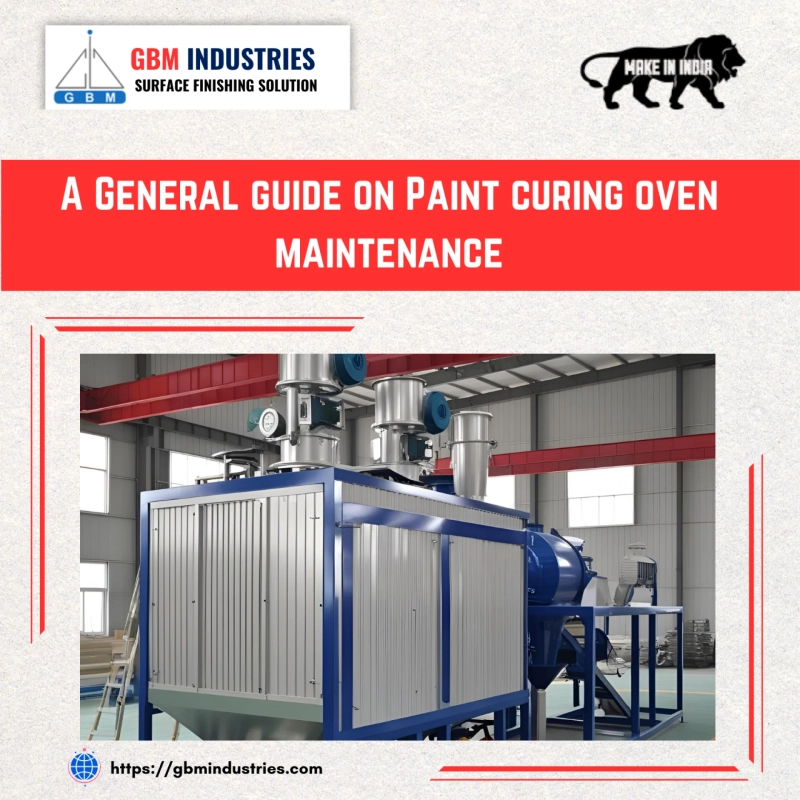Introduction to Paint Curing Oven
For manufacturers focused on durability and performance, a Paint curing oven is an essential piece of equipment that ensures high-quality, durable coatings. Whether used in automotive, aerospace, or general manufacturing industries, these ovens are vital for achieving a smooth finish and long-lasting protection. However, like all high-performance machinery, they require proper upkeep. Without maintenance, a curing oven may lead to inconsistent results, higher energy consumption, and even workplace safety risks. This guide offers a complete overview of how to maintain your paint curing oven effectively, ensuring consistent performance and longevity.
Why Maintenance Matters
Regular maintenance of a curing oven is critical because it improves consistency, efficiency, and safety. A well-maintained oven delivers accurate temperature control, reduces energy waste, extends the life of components, and minimizes downtime. More importantly, it helps businesses meet safety regulations and prevent fire hazards. Since the curing oven is often a significant investment, proper care ensures maximum return over its lifespan.
Key Components to Monitor
Understanding the main components of a curing oven makes it easier to maintain. The heating system—whether it relies on burners, electric elements, or infrared heaters—must be inspected frequently. Air circulation, powered by fans and ducts, is essential for even temperature distribution, while control systems such as thermostats and sensors need regular calibration. Conveyor systems in continuous ovens also require inspection, and insulation and seals must be maintained to prevent heat loss and ensure energy efficiency.
Routine Maintenance Practices
Maintenance can be broken down into daily, weekly, monthly, and annual checks. Daily, operators should monitor temperature readings, airflow, and door seals while removing dust or overspray near heating elements. Weekly, it is important to clean filters, inspect conveyors, verify calibration of controls, and lubricate moving parts like fans. Monthly checks should include a closer look at heating elements, insulation panels, electrical connections, and exhaust systems. Finally, an annual preventive inspection by a professional technician is recommended to recalibrate sensors, test safety systems, and replace worn-out parts.
Top Resource✔
The Versatility and Functionality of Batch Ovens for Different Industries
Batch Ovens — What Are They? Where are they Used?
Common Problems and Solutions
A curing oven can face several issues over time. Uneven curing often results from poor airflow, clogged filters, or faulty fans, which can usually be resolved through cleaning and balancing airflow. Temperature fluctuations may indicate faulty thermostats or sensors, requiring recalibration or replacement. Energy inefficiency is often caused by worn insulation, leaking doors, or blocked ducts, which can be fixed by upgrading insulation and seals. Excessive downtime almost always results from neglecting preventive maintenance, making a strict schedule essential.
Safety Precautions During Maintenance
Since ovens operate at high temperatures, safety should be the top priority during servicing. Always disconnect the power supply before beginning any work, and ensure the oven has cooled down completely. Technicians should use gloves, goggles, and masks to avoid injuries and exposure to fumes. Fire safety equipment like extinguishers must always be accessible, and staff should be trained in emergency shutdown procedures.
Best Practices for Longevity
To extend the life of your paint curing oven, maintain a detailed maintenance logbook and schedule quarterly professional inspections. Keeping the work area clean, upgrading to modern energy-efficient components, and training operators on correct usage all contribute to a longer operational life. These small practices help reduce wear and tear, improve safety, and enhance overall productivity.
Conclusion
Maintaining a paint curing oven is not only about extending its service life but also about ensuring product quality, energy efficiency, and workplace safety. From daily checks to annual servicing, each step contributes to reliable performance and reduced downtime. By understanding its components, preventing common issues, and following best practices, businesses can safeguard their investment and ensure smooth operations. Now is the time to implement a structured maintenance plan and keep your curing oven performing at its best for years to come.
Keep your coatings flawless—Start your structured maintenance routine now!


